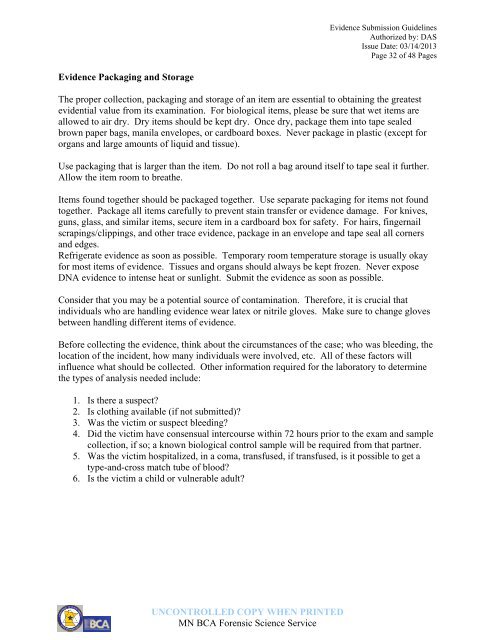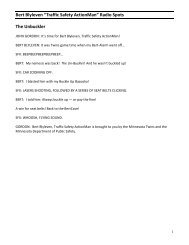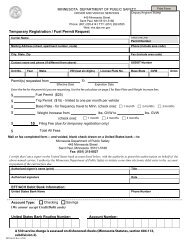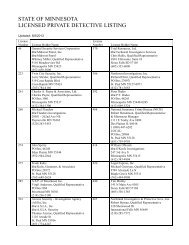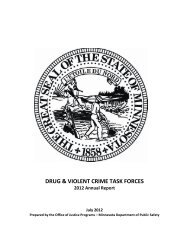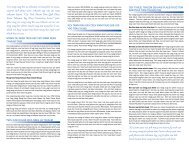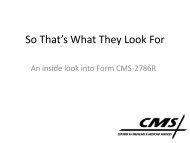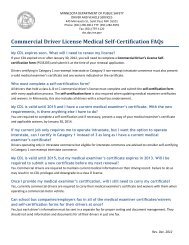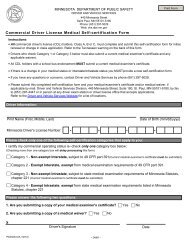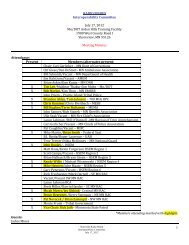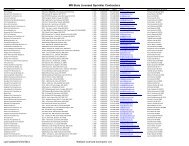Evidence Submission Guidelines - Minnesota Department of Public ...
Evidence Submission Guidelines - Minnesota Department of Public ...
Evidence Submission Guidelines - Minnesota Department of Public ...
Create successful ePaper yourself
Turn your PDF publications into a flip-book with our unique Google optimized e-Paper software.
<strong>Evidence</strong> Packaging and Storage<br />
UNCONTROLLED COPY WHEN PRINTED<br />
MN BCA Forensic Science Service<br />
<strong>Evidence</strong> <strong>Submission</strong> <strong>Guidelines</strong><br />
Authorized by: DAS<br />
Issue Date: 03/14/2013<br />
Page 32 <strong>of</strong> 48 Pages<br />
The proper collection, packaging and storage <strong>of</strong> an item are essential to obtaining the greatest<br />
evidential value from its examination. For biological items, please be sure that wet items are<br />
allowed to air dry. Dry items should be kept dry. Once dry, package them into tape sealed<br />
brown paper bags, manila envelopes, or cardboard boxes. Never package in plastic (except for<br />
organs and large amounts <strong>of</strong> liquid and tissue).<br />
Use packaging that is larger than the item. Do not roll a bag around itself to tape seal it further.<br />
Allow the item room to breathe.<br />
Items found together should be packaged together. Use separate packaging for items not found<br />
together. Package all items carefully to prevent stain transfer or evidence damage. For knives,<br />
guns, glass, and similar items, secure item in a cardboard box for safety. For hairs, fingernail<br />
scrapings/clippings, and other trace evidence, package in an envelope and tape seal all corners<br />
and edges.<br />
Refrigerate evidence as soon as possible. Temporary room temperature storage is usually okay<br />
for most items <strong>of</strong> evidence. Tissues and organs should always be kept frozen. Never expose<br />
DNA evidence to intense heat or sunlight. Submit the evidence as soon as possible.<br />
Consider that you may be a potential source <strong>of</strong> contamination. Therefore, it is crucial that<br />
individuals who are handling evidence wear latex or nitrile gloves. Make sure to change gloves<br />
between handling different items <strong>of</strong> evidence.<br />
Before collecting the evidence, think about the circumstances <strong>of</strong> the case; who was bleeding, the<br />
location <strong>of</strong> the incident, how many individuals were involved, etc. All <strong>of</strong> these factors will<br />
influence what should be collected. Other information required for the laboratory to determine<br />
the types <strong>of</strong> analysis needed include:<br />
1. Is there a suspect?<br />
2. Is clothing available (if not submitted)?<br />
3. Was the victim or suspect bleeding?<br />
4. Did the victim have consensual intercourse within 72 hours prior to the exam and sample<br />
collection, if so; a known biological control sample will be required from that partner.<br />
5. Was the victim hospitalized, in a coma, transfused, if transfused, is it possible to get a<br />
type-and-cross match tube <strong>of</strong> blood?<br />
6. Is the victim a child or vulnerable adult?


